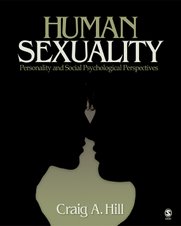Oprah Winfrey “stunned America” with the “shocking” exposé of Black men on “the down low” in her April 16, 2004 show, ‘‘A Secret World of Sex: Living on the ‘Down Low’’’ (Sandfort & Dodge, 2008). Or so it would seem, in her program highlighting the now well known, and somewhat controversial, book by J. L. King, On the Down Low: A Journey into the Lives of “Straight” Black Men Who Sleep with Men. (Quotations from this book are presented in my sexuality textbook on page 208.) In what can only be called a quantum leap, Oprah accelerated the popularization of the term, “down low,” in a way that only she could do as such a monumental media personality. The “down low” is the situation of a Black man, in this case, living and identifying as a straight man with a wife and family, while at the same time secretly engaging in sex and having intimate relationships with men.
In fact, King’s book was not the profound revelation that it was promoted to be by the Oprah Winfrey Show. The New York Times Magazine had published an article the previous year documenting an extensive examination of a secretive organized culture comprising primarily Black men who lived ostensibly as straight men. Several novels almost 10 years before this had also described the experience of Black male bisexuality (Sandfort & Dodge, 2008).
In the lead article of a special section of the Archives of Sexual Behavior, Theo Sandfort and Brian Dodge identify a number of conceptual difficulties with the notion of “the down low.” To begin with, a clear, stable definition of the phenomenon has not been advanced. The idea of “the down low” was originated in African-American culture to refer to any type of behavior an individual hides from others. By the 1990s, the term was used in rhythm and blues lyrics to refer to male infidelity. The more recent use of the term is a limited version of the earlier meaning. A change in its meaning also occurred when men began to use “down low” in reference to their identity, an aspect of their life that defines who they are.
Furthermore, the secretive, deceptive meaning associated with “down low” is yet another instance of the historical tendency to demonize not only sexuality in general, but specifically Black male sexuality (Sandfort & Dodge, 2008). Black male sexuality has been conceived in extremely negative terms throughout U.S. history, as animalistic and dangerous, since the days of slavery. Linking it to bisexuality, especially situations involving secretive affairs that put one’s spouse at risk for sexually transmitted disease and death, amplifies its dangerousness tremendously.
Yet, discussions of bisexuality in earlier times and involving other ethnic groups have not been treated with the same sinister reputation. In 1974, Newsweek created a sensation with an article “exposing” the “new bisexual chic.” Bisexuality was cast as the trendy, classy new pop phenomenon indulged in by celebrities and supermodels. Likewise, Latino bisexual men were not initially swept up in the highly negative perspective regarding the “down low;” this is despite research 20 years ago documenting the presence of surreptitious male-male sexual behavior among men who viewed themselves as heterosexual. Even Latino men, however, became linked with the idea of dangerous liaisons after the onset of the HIV/AIDS epidemic (Sandfort & Dodge, 2008).
Paraphrasing Sandfort and Dodge (2008), the concept of “the down low” became a handy, commonsensical explanation for the surge in HIV infections within African American populations. It is the great villain that made sense as the culprit because of its link to sexuality. Sexuality remains an issue about which much of our culture is still not comfortable, and that conjures feelings of anxiety, sinfulness, and even guilt and remorse. In their own words, “Although Down Low men seem useful scapegoats for the disproportionally high prevalence rates of HIV among Black women, any direct empirical evidence regarding the role of the Down Low phenomenon in the HIV epidemic among African Americans is lacking” (p. 676).
In fact, very little research is available to understand the issues and complexities involved in Black male bisexuality and its connection with risk. The special section of the Archives of Sexual Behavior presents a number of articles devoted exactly to these issues. Look for additional entries in this blog on the results of the studies presented in these articles.
Sandfort, T. G. M., & Dodge, B. (2008). ‘‘...And then there was the Down Low’’: Introduction to Black and Latino male bisexualities. Archives of Sexual Behavior, 37, 675-682.
Tuesday, October 14, 2008
Subscribe to:
Posts (Atom)
